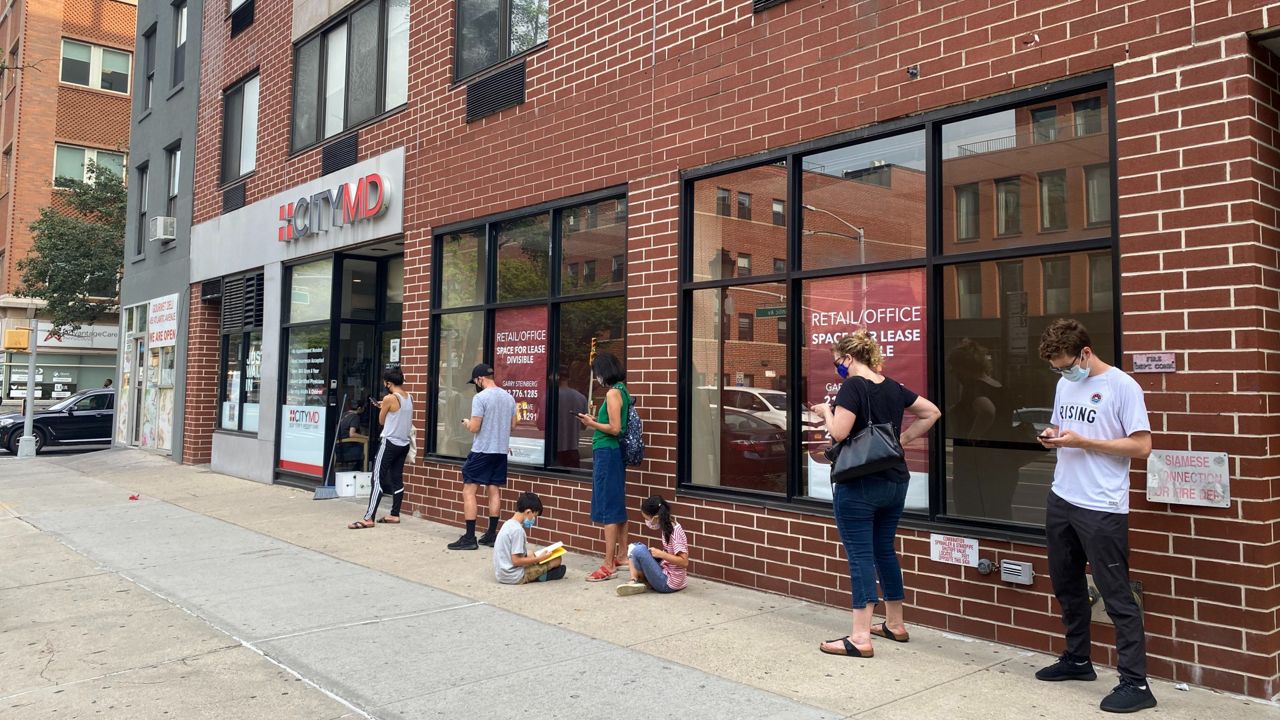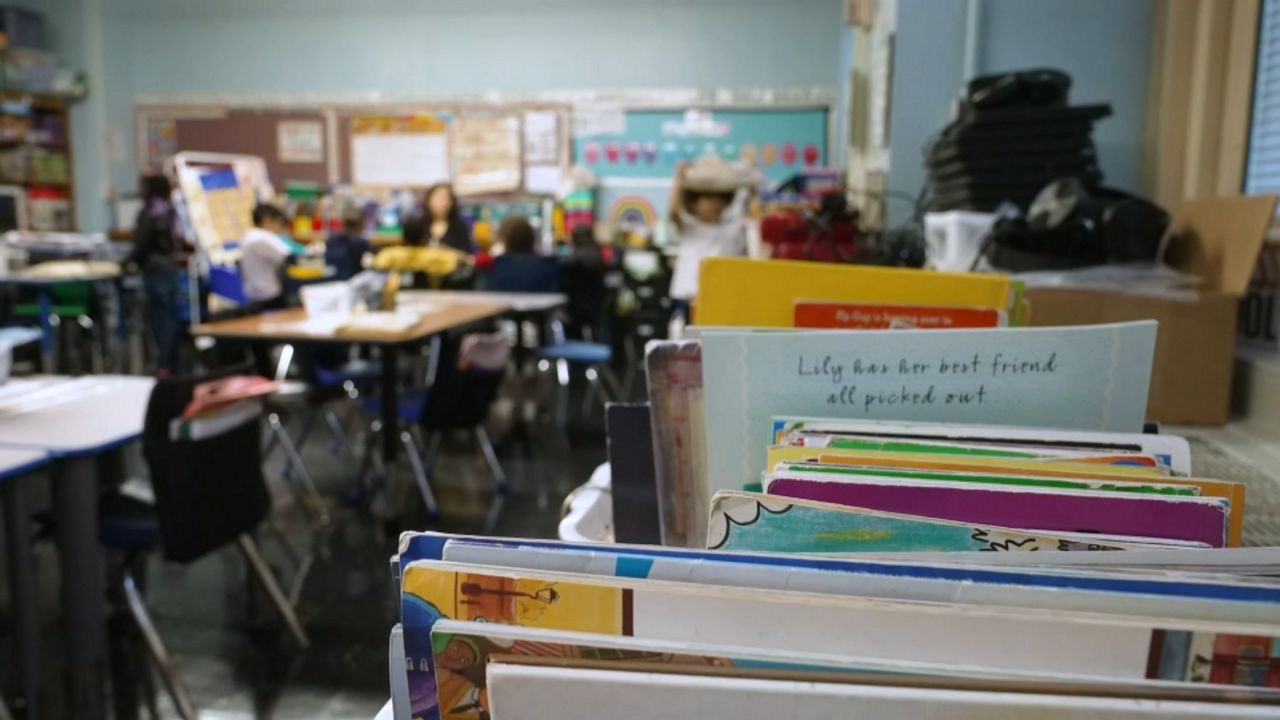As COVID-19 cases rise in the city, some testing centers are seeing long lines reminiscent of last winter’s surge.
The demand for testing decreased over the year as more people got vaccinated, but that’s changed as the delta variant has quickly become dominant — currently at 83% of tested cases, according to the city health department.
“We had a precipitous drop for most of this year,” said Councilman Mark Levine, who is chair of the council's Committee on Health, and the Democratic nominee for Manhattan Borough president. “And in the last month, we've seen about a 50% increase in the number of tests done, which is really important, because testing still is a key strategy.”
It’s led to long wait times and lines outside of CityMD sites in parts of the city, including Boerum Hill and Park Slope in Brooklyn. New cases are currently averaging about 1,500 a day, according to city data. That’s a big contrast from earlier in the summer when the number of new cases was around 200 a day.
Due to the highly infectious nature of the delta variant, the Centers for Disease Control and Prevention has recommended that vaccinated people wear masks while indoors in certain settings and that they get tested within three to five days of close contact with someone who has COVID-19.
Officials like Levine view increased testing as the right move and key to tackling the virus.
“But I'm also concerned that our testing capacity actually has shrunk since the big winter surge and you're seeing that in long lines and wait times in places like CityMD,” he said. “It's now difficult to get an appointment at rapid COVID test centers and I've heard anecdotes that people have been frustrated when they've waited an hour at a CityMD and just gone home.”
To accommodate the increased demand for testing, CityMD announced last week that they would be resuming their virtual line system on Monday as well as adjusting patient registration hours.
“Over the past several weeks, we have seen a significant jump in COVID-related walk-in visits and some test results are taking longer than normal,” according to Joy Lee-Calio, a CityMD spokesperson via email. “As we did last fall when COVID-related demand spiked, we are working on ways to address the surge in demand, including adjusting hours and resuming our virtual line system at all CityMD locations. This will allow us to safely accommodate the increase in patient visits for typical urgent care needs and COVID-19 testing.”
But the key to expanding access isn’t necessarily found in just increasing the number of testing sites, according to experts. It’s about eliminating as many barriers as possible, like making sure accurate information is being disseminated and that open testing sites are placed in the appropriate locations.
“There are populations that may not live near a testing site,” said Dr. Anna Bershteyn, assistant professor in the Department of Population Health at NYU Langone. “They may not have easy access to transportation. They will be very short on time, probably working multiple jobs and caring for kids. In public housing, we see lower testing rates, probably because there are barriers there so [we need to be] doing everything possible to lower those barriers.”
It’s why at-home testing is considered by experts to be a hugely important part of the solution.
At-home testing in New York City was made available in select ZIP codes in March and expanded citywide in April, according to city Health + Hospitals spokesperson Adam Shrier.
“To date, the at-home testing program has administered over 25,000 tests to over 11,000 households, with a positivity rate among close contacts of 14%,” said Shrier via email.
But the availability of this program needs to reach a lot more people and not just the currently eligible groups, Levine said.
“What's so infuriating is that we expected that by now rapid antigen tests would be incredibly easy to access that people could do it at home and it's not clear to me why that hasn't materialized,” he said. “But I do feel it's holding us back now and that we need to solve this problem so we don't face another bottleneck into the fall.”
The city operates 75 HHC-run testing sites, which include brick and mortar locations, mobile trucks and self-swab teams, and are able to adjust certain locations as needed, according to Shrier.
“We are able to scale our mobile fleet up or down based on demand and have additional capacity if needed to deploy,” he said.
But with the current iteration of the virus threatening the city’s reopening, there is still a significant gap to ensure testing becomes widespread.
“The virus is circulating in the city and we need testing to stop it,” Levine said.



_NJ_Transit_Strike_Deal_Close_PKG_051725_134229129_307)
